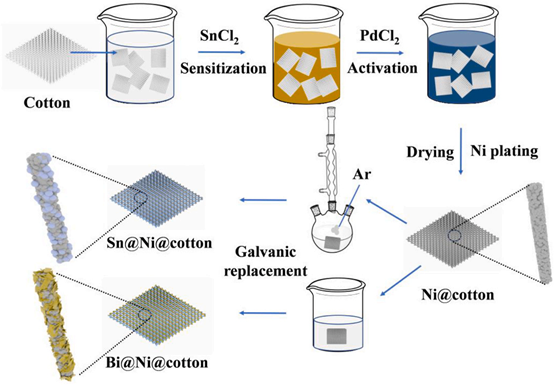Abstract:Textile-based electrodes have emerged as essential components for flexible batteries owing to their low cost, high mechanical strength and three-dimensional microchannels. Nevertheless, the conventional fabrication methods are limited to coating and in-situ growth techniques. Herein, Sn or Bi metal is galvanically replaced by Ni- encapsulated cotton at moderate temperature, which is designated as Sn@Ni@cotton or Bi@Ni@cotton. Ni@cotton primarily functions as a current collector, whereas Sn/Bi serves as the active material for lithium storage. Furthermore, Sn@Ni nanosheets with hierarchical porosity grow vertically on the cotton textile, ensuring facile ion diffusion and robust interfacial adhesion. Consequently, when evaluated as lithium-ion battery anodes, the optimized Sn@Ni@cotton displays excellent cycling stability (277.8 mAh g−1 at 1 A g−1 after 2500 cycles) and superior rate capability (322.3 mAh g−1 at 2 A g−1). Interestingly, unlike conventional foil- based electrodes, the structure evolution of Sn or Bi metal during lithiation/delithiation connects originally isolated microfibers, particularly within the two-dimensional plane, forming integrated electron transport pathways in the textile, which boosts the electrochemical properties of lithium-ion batteries. Furthermore, the Sn@Ni@cotton||LiFePO4 full cell exhibits a specific capacity of 72 mAh g−1 after 50 cycles at 0.1 A g−1, high- lighting its potential for practical applications.
